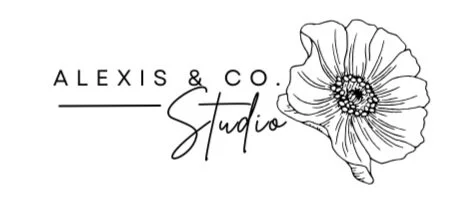Media Matters: How the Materials We Choose in Art Therapy Shape the Healing Process
In art therapy, the materials matter just as much as the message. Each medium—whether wet or dry, hard or pliable, vibrant or muted—carries an invitation, a boundary, and a possibility. Behind every brushstroke and every piece of clay is a carefully considered choice, one rooted in neuroscience, trauma theory, and the belief that healing begins by meeting the body where it is.
We do not hand someone a lump of clay by accident. We do not offer fluid watercolor when a client's sense of self is barely holding shape. We choose, intentionally, with the whole nervous system in mind. This is the heart of trauma-informed art therapy: recognizing that materials interact with the sensory, cognitive, and emotional systems—and that those interactions can either regulate or dysregulate, empower or overwhelm (Malchiodi, 2020).
The Expressive Therapies Continuum (ETC) offers one of the clearest maps for this work. Developed by Kagin and Lusebrink (1978), the ETC conceptualizes how different media stimulate different levels of processing: kinesthetic/sensory, perceptual/affective, cognitive/symbolic, and creative integration. At the base are the sensory and kinesthetic levels—raw, body-based experiences that help clients regulate and release physical tension. Media like finger paints, sand, or soft textiles can help individuals with high arousal or trauma histories return to a sense of embodied safety. Clay, especially in the context of Clay Field Therapy, is uniquely positioned in this category—it invites touch, resistance, movement, and grounding all at once (Hinz, 2009).
Conversely, fluid materials like watercolor or ink activate more affective and symbolic processes. They allow for emotional expression that isn’t quite ready to be named but still needs to flow. Yet these media also require a certain openness to ambiguity and a tolerance for loss of control. For clients who are dissociative, overwhelmed, or early in trauma processing, this can be too much too soon (Ogden, Minton, & Pain, 2006). That’s why a trauma-informed art therapist carefully modulates materials based on the client’s window of tolerance (Siegel, 1999).
There is also a vital role for resistive media—materials like oil pastels, dry clay, or thick tempera paint. These media offer structure and containment. They support proprioceptive feedback, offering sensory boundaries that can be deeply regulating for those with sensory integration challenges or a history of boundary violations (Linegar & Ziegler, 2020). The physical resistance of the medium mirrors the emotional work of setting limits, asserting needs, and reclaiming power. This is especially evident in Clay Field Therapy, a method where the client works with their hands in a large tray of smooth clay, guided only by their own movement impulses and the supportive, attuned presence of the therapist. Here, transformation happens not through words, but through pressure, texture, gesture, and emerging form (Lorenz, 2018).
Each material becomes a metaphor. Torn paper speaks of rupture. Glued collage pieces whisper about reconstruction. Mask-making invites identity exploration. Mandalas return us to center. It’s not just “making art”—it’s creating a visual, tactile, somatic dialogue with the self. And that dialogue is often where the healing begins.
In this sacred space, the materials do not dictate the story—they hold it. They allow it to surface slowly, layer by layer, in its own time and language. And the art therapist? They witness, they contain, and they offer just enough of the right material at the right time to keep the story unfolding—safely, gently, and with profound respect.
Because media matters. And in art therapy, every texture, color, and form is part of the language of healing.
References
Hinz, L. D. (2009). Expressive therapies continuum: A framework for using art in therapy. Routledge.
Kagin, S. L., & Lusebrink, V. B. (1978). The expressive therapies continuum. Art Psychotherapy, 5(4), 171–180. https://doi.org/10.1016/S0090-9092(78)80017-0
Linegar, M., & Ziegler, D. (2020). Creative interventions with traumatized children: Art for healing. PESI Publishing.
Lorenz, I. (2018). Healing trauma at the Clay Field: Sensorimotor art therapy in practice and supervision. Jessica Kingsley Publishers.
Malchiodi, C. A. (2020). Trauma and expressive arts therapy: Brain, body, and imagination in the healing process. Guilford Press.
Ogden, P., Minton, K., & Pain, C. (2006). Trauma and the body: A sensorimotor approach to psychotherapy. W. W. Norton & Company.
Siegel, D. J. (1999). The developing mind: How relationships and the brain interact to shape who we are. Guilford Press.
